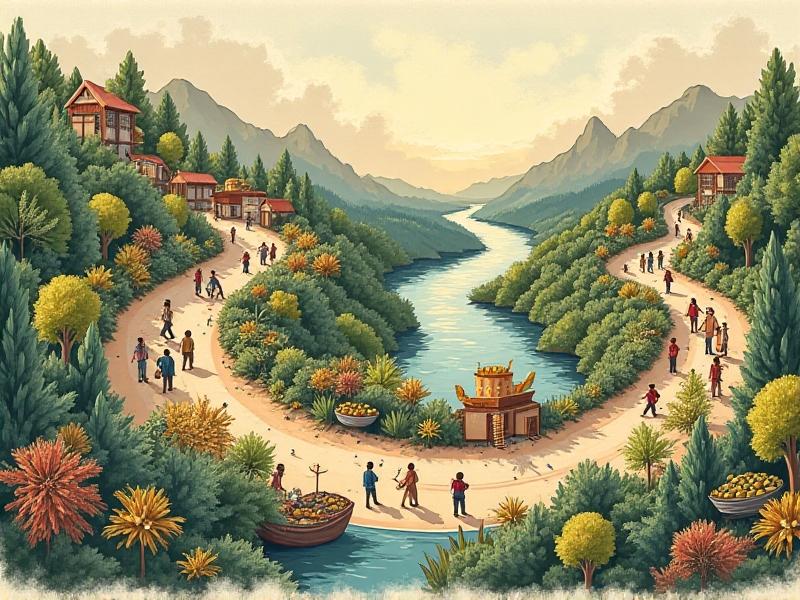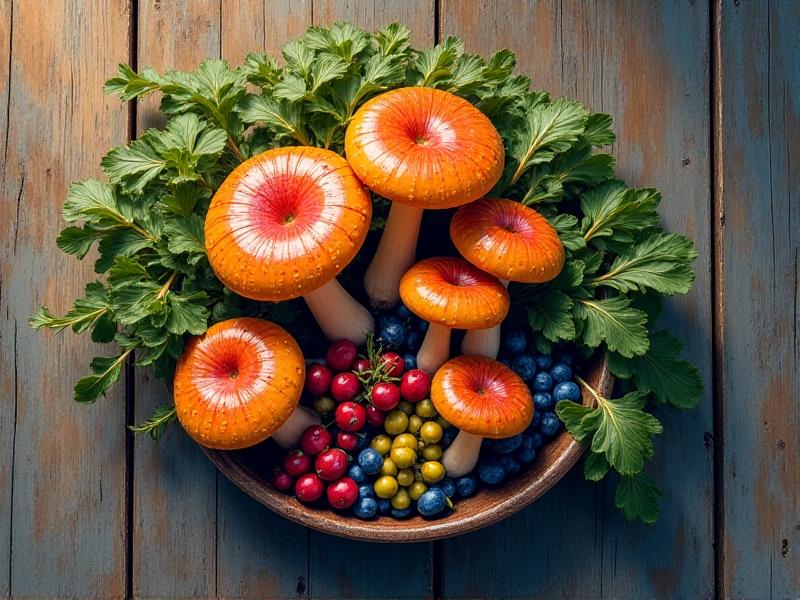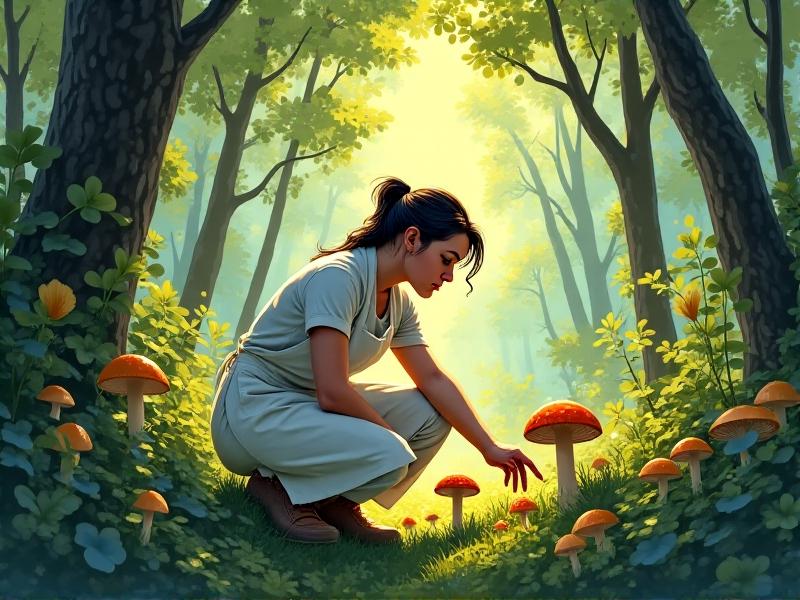Developing Hyperlocal Foraging Maps Using Community-Sourced Data
The Rise of Hyperlocal Foraging: A Community-Driven Movement
In recent years, the practice of foraging has seen a resurgence, driven by a growing interest in sustainability, local food systems, and reconnecting with nature. Hyperlocal foraging, in particular, has emerged as a powerful way for communities to map and share knowledge about edible plants, mushrooms, and other wild resources in their immediate surroundings. Unlike traditional foraging, which often relies on broad regional knowledge, hyperlocal foraging focuses on specific neighborhoods, parks, and even streets, making it highly accessible and relevant to urban and suburban dwellers.
This movement is deeply rooted in community collaboration. By pooling together observations, experiences, and expertise, individuals can create detailed foraging maps that highlight the abundance of wild edibles in their area. These maps not only serve as practical guides but also foster a sense of shared stewardship over local ecosystems. The process of developing hyperlocal foraging maps is inherently democratic, as it relies on the contributions of many rather than the authority of a few.
As cities expand and green spaces become more fragmented, hyperlocal foraging offers a way to rediscover the natural bounty that exists within our built environments. It encourages people to look closely at their surroundings, to notice the dandelions growing in a crack in the sidewalk or the blackberry bushes lining a nearby trail. In doing so, it transforms the way we interact with our urban landscapes, turning them into sources of nourishment and wonder.

The Role of Technology in Mapping Wild Edibles
Technology has played a pivotal role in the development of hyperlocal foraging maps. Mobile apps, GPS, and online platforms have made it easier than ever for foragers to document and share their findings. Apps like iNaturalist and Falling Fruit allow users to upload photos, locations, and descriptions of wild edibles, creating a crowdsourced database that can be accessed by others in the community. These tools not only streamline the process of data collection but also help verify the accuracy of information through community feedback and expert input.
GPS technology, in particular, has revolutionized the way foraging maps are created. By pinpointing the exact location of a plant or mushroom, foragers can create highly detailed maps that guide others to the same spot. This level of precision is especially valuable in urban environments, where green spaces are often small and scattered. Additionally, GIS (Geographic Information Systems) software can be used to overlay foraging data with other layers of information, such as soil quality, rainfall patterns, and land use, providing a more comprehensive understanding of the local ecosystem.
While technology has made foraging more accessible, it also raises important questions about privacy and sustainability. For example, how can we ensure that sensitive locations, such as rare plant habitats, are protected from overharvesting? And how can we balance the desire to share knowledge with the need to preserve the integrity of local ecosystems? These are challenges that the foraging community must navigate as it continues to grow and evolve.
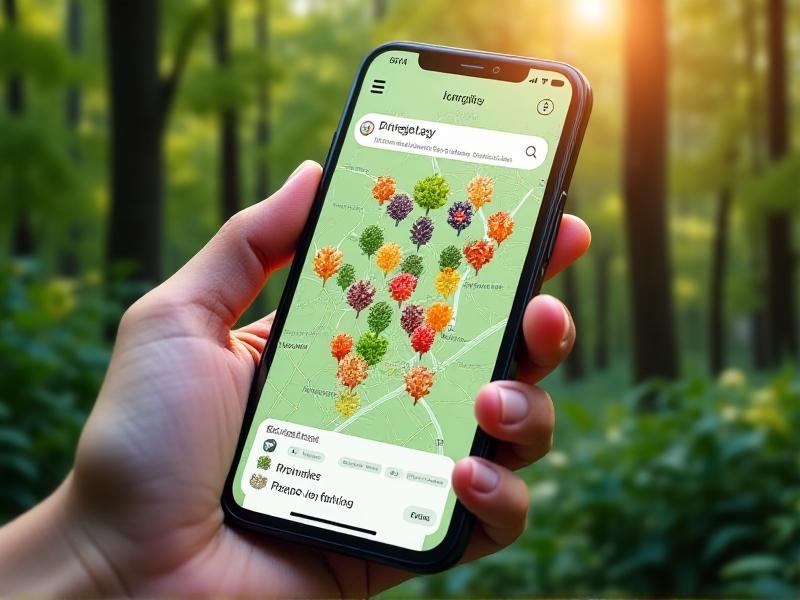
Building a Community-Sourced Foraging Database
At the heart of any hyperlocal foraging map is a robust database of community-sourced data. This database serves as the foundation for the map, providing the information needed to identify and locate wild edibles. Building such a database requires careful planning and collaboration, as well as a commitment to accuracy and inclusivity.
One of the first steps in creating a community-sourced foraging database is to establish clear guidelines for data collection. This includes defining what types of information should be recorded (e.g., plant species, location, seasonality) and how it should be documented (e.g., photos, GPS coordinates). It’s also important to provide training and resources to ensure that contributors have the knowledge and skills needed to identify plants accurately and responsibly.
Community engagement is another key component of building a successful foraging database. This can be achieved through workshops, foraging walks, and online forums, where participants can share their experiences, ask questions, and learn from one another. By fostering a sense of community and collaboration, these activities not only enrich the database but also strengthen the bonds between participants, creating a network of mutual support and shared learning.
Finally, it’s essential to ensure that the database is accessible and user-friendly. This means designing a platform that is easy to navigate, with clear categories and search functions. It also means making the data available in multiple formats, such as printable maps, mobile apps, and online databases, to accommodate different user preferences and needs. By prioritizing accessibility and usability, the foraging community can ensure that its collective knowledge reaches as many people as possible.
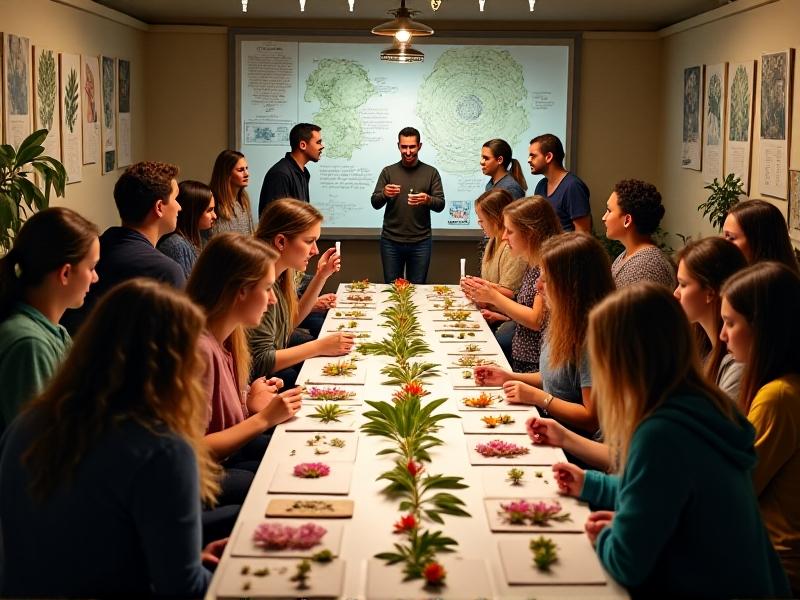
Ethical Foraging: Balancing Harvest and Conservation
As hyperlocal foraging gains popularity, it’s crucial to address the ethical considerations that come with harvesting wild plants and fungi. While foraging can be a sustainable way to connect with nature and source food, it also has the potential to harm local ecosystems if not practiced responsibly. Ethical foraging involves a commitment to minimizing environmental impact and ensuring that wild populations are not depleted.
One of the core principles of ethical foraging is to take only what you need and to leave enough for wildlife and future growth. This means harvesting in moderation and avoiding rare or endangered species. It also means being mindful of the timing and method of harvest, as certain plants are more vulnerable during specific stages of their life cycle. For example, harvesting the roots of a plant can kill it, while picking leaves or flowers may allow it to regenerate.
Another important aspect of ethical foraging is to respect private property and protected areas. Foragers should always seek permission before harvesting on private land and should avoid areas where foraging is prohibited, such as national parks or nature reserves. Additionally, it’s important to be aware of local regulations and guidelines, as these can vary widely depending on the region and the type of plant or fungus being harvested.
Education and awareness are key to promoting ethical foraging practices. By sharing knowledge about sustainable harvesting techniques and the ecological impact of foraging, the community can help ensure that this practice remains a positive force for both people and the planet. Ultimately, ethical foraging is about fostering a deep respect for nature and recognizing our role as stewards of the land.
Case Studies: Successful Hyperlocal Foraging Initiatives
Across the globe, communities are coming together to create hyperlocal foraging maps that celebrate the wild edibles in their area. These initiatives not only provide practical resources for foragers but also strengthen community ties and promote environmental stewardship. Here are a few examples of successful hyperlocal foraging projects that have made a significant impact.
In Portland, Oregon, the Urban Edibles project has created an online database of wild edibles found throughout the city. The project relies on community contributions to map the locations of fruit trees, nut trees, and edible plants in public spaces. The database is freely accessible to anyone, encouraging residents to explore their city in a new way and to share in the abundance of its natural resources. The project has also organized foraging walks and workshops, fostering a sense of community and shared learning.
In London, the Wild Food Map is a collaborative effort to document the wild edibles found in the city’s parks, gardens, and streets. The map is hosted on an interactive platform that allows users to add their own findings and to search for specific plants or locations. The project has been instrumental in raising awareness about the diversity of wild edibles in urban environments and has inspired similar initiatives in other cities around the world.
In Melbourne, Australia, the Foraging Melbourne project has created a series of hyperlocal foraging maps that highlight the edible plants and fungi found in different neighborhoods. The maps are available in both digital and print formats, making them accessible to a wide audience. The project has also partnered with local schools and community groups to educate people about sustainable foraging practices and the importance of preserving local ecosystems.
Challenges and Opportunities in Hyperlocal Foraging
While hyperlocal foraging offers many benefits, it also presents a unique set of challenges that must be addressed to ensure its long-term success. One of the primary challenges is the potential for overharvesting, especially in areas with high population density. As more people take up foraging, there is a risk that popular spots could be depleted, leaving little for wildlife or future foragers. To mitigate this risk, it’s important to promote sustainable harvesting practices and to educate foragers about the ecological impact of their actions.
Another challenge is the issue of land access and ownership. In many urban areas, green spaces are limited and often privately owned, making it difficult for foragers to access wild edibles. This can create tensions between foragers and landowners, as well as raise questions about the right to forage in public spaces. To address these issues, it’s essential to engage in open dialogue with landowners and local authorities, and to advocate for policies that support community access to natural resources.
Despite these challenges, hyperlocal foraging also presents significant opportunities for innovation and collaboration. For example, technology can be used to create more sophisticated foraging maps that incorporate real-time data and user feedback. Additionally, partnerships with local businesses, schools, and community organizations can help expand the reach of foraging initiatives and integrate them into broader sustainability efforts. By working together, the foraging community can overcome these challenges and create a more resilient and inclusive movement.
The Future of Hyperlocal Foraging: Trends and Innovations
As the hyperlocal foraging movement continues to grow, it is evolving in exciting and innovative ways. One emerging trend is the integration of foraging with other sustainable practices, such as urban farming, permaculture, and food waste reduction. By combining these approaches, communities can create more holistic and resilient food systems that are deeply connected to their local environments.
Another trend is the use of augmented reality (AR) and virtual reality (VR) technologies to enhance the foraging experience. For example, AR apps can overlay information about wild edibles onto a live view of the environment, making it easier for foragers to identify plants and learn about their uses. Similarly, VR can be used to create immersive foraging experiences that allow people to explore different ecosystems and learn about their biodiversity from the comfort of their homes.
Community-driven research is also playing an increasingly important role in the foraging movement. By conducting citizen science projects, foragers can contribute valuable data about the distribution, abundance, and health of wild edibles. This information can be used to inform conservation efforts, guide policy decisions, and improve the accuracy of foraging maps. As more people get involved in these projects, the foraging community is becoming a powerful force for environmental stewardship and scientific discovery.
Looking ahead, the future of hyperlocal foraging is bright, with endless possibilities for innovation and collaboration. As communities continue to explore and celebrate the wild edibles in their midst, they are not only reconnecting with nature but also building a more sustainable and resilient future. The movement is a testament to the power of collective action and the enduring human connection to the natural world.

